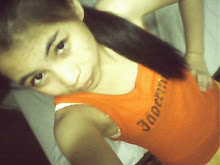
I have learned in this system that the cardiovascular system has three major components include the heart (which is the organ that pumps blood through the system), blood ( a form of connective tissue that has a fluid component called plasma and a variety of cells and substances, and blood vessels ( a network of passageways to transport the blood to and from the body's cells). I have learned that blood vessels can be classified into arteries ( vessels that carry blood AWAY from the heart - which means that the blood carried by the arteries is deoxygenated), the arterioles ( smaller artery ), veins (vessels that carry blood TOWARDS the heart - which means that the blood carried by the veins is oxygenated), venules ( tiniest vessel) and capillaries (where the exchange of nutrients, gases and waste products happened - it was the transition vessels where blood begins its trip back to the heart). Blood is the transport of oxygen. It has two composition - plasma (the yellowish, straw colored liquid ) and formed solid ( include the Red blood cells (RBC) also called as erythrocytes, White blood cells (WBC) also called as leukocytes and Platelets also called as thrombocytes). I have leraned the different parts of the heart and how the blood go tho the different parts of the body.
If I will explain this to someone, I will discuss the three major components of the cardiovascular which is the heart, blood and blood vessels. I will explain the blood and its composition. The blood vessels and the classification of it. I will expalin how the blood go to the different parts of the bosy. From the superior vena cava (blood from head and arms) and inferior vena cava (blood from truk and legs), the deoxygenated blood will pass through the right atrium and will pass through the tricuspid valve because it is a one-way valve. After passing the first valve, the blood is now going in the right ventricle contracts increasing the internal pressure. This pressure closes the tricuspid valve and forces open the pulmonary valve thus sending blood toward the lung via the pulmonary artey. This blood will bacome oxygenated because while the blood is in the lung, the exchange of gases where happen here and then it will return to the left side of the heart. Oxygenated blood returns from the lung via the pulmonary vien and fills the left atrium creating a pressure against the mitral valve. This pressure of returning blood forces the mitral valve open and begins filling the left ventricle. The left ventricle contracts increasing internal pressure. This pressure closes the mitral valve and forces open the aortic valve causing oxygenated blood to flow through the aorta to deliver oxygen throughout the body.
Our teacher in Biology made this lesson easier for us in giving us lot of activities for us to remember the parts and the cardiac cycle. He explains it well and good..
